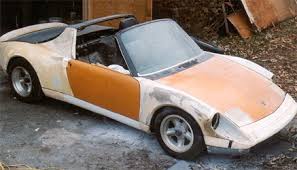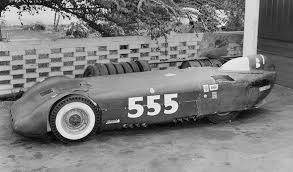-
Posts
38,175 -
Joined
-
Last visited
Content Type
Profiles
Forums
Events
Gallery
Everything posted by Ace-Garageguy
-
A couple o' thoughts on shaving or O-rings... If you mount your tires on wheels, you can probably do a decent job shaving the treads by chucking the assemblies in a small lathe or drill-motor, and sanding the treads as they rotate. Using water as a lube, and about 180 grit otter get you there. OR...finding pre-made O-rings that fit your wheels might be a good trick, but O-ring cord stock is available at places like MSC and Grainger Industrial Supply. An alternative is polyurethane round-section drive-belt material. It's available in diameters from 2 mm to 20 mm, and though the usual minimum order is probably many times more than you could use in a lifetime, you can sometimes get lucky and find short lengths that are useless for belting, cheap. The ends can be joined with CA for a non-power-transmission application. Just a thought. Pre-packaged vacuum-cleaner belts, though too long, might be close to the section you need, too. Hmmmmm...this company appears to be willing to sell short lengths of their O-ring stock. Neoprene cord looks pretty good, maybe... Their .005" diameter is $2.66/foot with no minimum... https://www.theoringstore.com/index.php?main_page=index&cPath=117_2242&sort=2a&page=2&zenid=eca0dd28f97e9b0c1a0560eddc1cdeac
-

1/25 vs 1/24 Porsche 904
Ace-Garageguy replied to aurfalien's topic in Model Building Questions and Answers
There is also a 1/24 Auto-kit/Wills Finecast white-metal 904 with a multi-piece body...like separate fenders: (which I used while developing the first scale model of this) -
Christina Hendricks would do. Definitely. By all means. Yes. A big, grown-up girl. So fine, she deserves another picture. THIS is curvy: THIS is NOT:
-
Though not "Styline" but "Styling", the '57 T-bird with clay and carving tools pre-dates those shown above...
-
Really appreciate your input there. Those look great. Based on what I'm seeing, it's looking like the easiest way out is building it as 1/24 (there's a scale discussion in the other thread referenced above) to avoid narrowing the body shell, and slightly lengthen it (and the frame tubes) as you suggest. Thanks again. If mine ends up looking as good as your's, I'll be entirely satisfied.
-
Or FMJ (full meat jacket) would make an interesting round for a particular type of game.
-

Moebius 66 Ford F100 Pickup preview
Ace-Garageguy replied to SteveG's topic in Truck Kit News & Reviews
That's an interesting observation. I wonder if it has anything to do with the perceived market. Bigger parts are more resilient to abuse by little (young) fingers (or the less-skilled). On the other hand, some of the model RR parts in HO scale today are almost hair-thin. Two ends of the skill-development spectrum. -
Thanks. I'd forgotten entirely about that thread. I stupidly sprung $130 for a Gunze kit prior to doing the research, and now it's looking like all I got was a starting place if I want reasonable accuracy. To get it even close to right in 1/24 OR 1/25 looks like it's going to take considerable surgery. I bought the HRM Cheetah some time back. Probably shooda waited for a Cobra Daytona to come up, but getting in a hurry can cause dumb. Oh well. Looks like the Gunze kit will end up as this one... https://www.cnn.com/style/article/shelby-daytona-cobra-coupe/index.html
-
Yeah, and I can just hear the workers in the Chinese factory as they sew in the fake Coach labels... 颓废的美国人疯了
-
I'm assuming you haven't seen the bacon bra...
-

Dodge Power Wagon
Ace-Garageguy replied to Mopar - D's topic in WIP: Model Trucks: Pickups, Vans, SUVs, Light Commercial
Interesting. That's a very good color for it. I would have thought otherwise. -

What Did You Get Today? (Not Model Related)
Ace-Garageguy replied to LOBBS's topic in The Off-Topic Lounge
I got a check for an invoice that's been outstanding for about 6 months. Then I got a flat tire...and of course, there was no lug wrench in the car. -
How are the proportions on the Gunze kit? Please, be hyper-critical. I'm not worried about a lack of engine or opening hood. Easy enough to rectify. But I just HATE having to redo a body because the manufacturer didn't get it right.
-
Yup...I'm getting it occasionally. Note the warning in the big red box is for www.escalemodels.com...not modelcarsmag.
-
Without a doubt, one of the wildest racing machines ever conceived. Love it.
-
Patented in 1898, by 1913, 54 of these steam-powered monsters were in operation unloading iron ore from Lakes boats. The ones in the film were built between 1904 and 1912. Eventually, there would be a total of 77 working Great Lakes ports. But technology changed. A new generation of Lakes ore-carrying boats were built, capable of unloading themselves, so by 1999 only six Huletts were left. The last pair worked happily until 2002, unloading coal barges in South Chicago. In 2010, they were cut up for scrap. Two of the Cleveland machines were disassembled and saved to be reassembled at a possible museum location elsewhere, at some time in the unknowable future.
-
^^^ Too cool. Is that an original Meyers Manx?
-

Original molds
Ace-Garageguy replied to RoadKillRods's topic in Car Aftermarket / Resin / 3D Printed
I don't understand the phrasing of your question "where do I go to get the original molds, not to make my own from an existing object". Original molds are the property of the people or companies who make them. In simple terms: Molds for resin-cast parts are taken directly from "masters", which are scratch-built models made by highly skilled craftsman. Liquid mold material is literally poured over the master. When it sets, the master is removed, and the hollow "negative" that remains is the mold. Molds for injection molding are made these days by CNC machining the "negative" cavities from solid blocks of metal. Data from the CAD-engineered plans drives the CNC process.- 2 replies
-
- resin
- miniatures
-
(and 1 more)
Tagged with:
-

Moebius 66 Ford F100 Pickup preview
Ace-Garageguy replied to SteveG's topic in Truck Kit News & Reviews
I'd certainly have to agree with that. -
Another British actress I always thought was an absolute knockout, the epitome of class, Hazel Court. Active in films from the mid-1940s through 1981.
-

What Did You Have for Dinner?
Ace-Garageguy replied to StevenGuthmiller's topic in The Off-Topic Lounge
Homemade red sghetti sauce with roasted garlic, onions, cumin, vinegar, red pepper, and mucho meat. Fine fine fine. Belch. Next few days will be Mexican, 'cause they had tortillas and tomatillos on sale. -
I'm kinda thinking with that much torque on tap, 300MPH is reachable. Consider this: in 1958, Mickey Thompson and Fritz Voight built a twin-engined (fuel-injected 392 Chrysler hemis) car that went something like 294 on the salt. Figure 900HP, 800 ft.lbs. torque, with a frontal area of around 13-14 sq.ft. The 4-engined (Pontiac 389) non-supercharged first version of the Challenger I had no problem breaking 300, with more frontal area, around 15 sq.ft., around 1800 HP, and 1500 ft.lbs. of torque. The second version, the 406 MPH car, had 3200HP and probably 2500 ft.lbs. of torque, but also had a huge increase in frontal area from the blowers sticking up out of the bodywork. Your all-up weight is really no problem, because you have literally miles to accelerate. The high weight will help traction too, always an issue at high speed on the salt...which is why Thompson favored all-wheel drive. Maybe think about narrowing the greenhouse as much as possible to still cleanly streamline the engines, but just barely, to further reduce frontal area. This is, of course, all just cocktail-napkin engineering...but it sure feels doable. EDIT: As far as tires go, Goodyear built Thompson's tires at a cost to them of somewhere around $30,000. Derived in part from what they knew about building tires for jet aircraft, they were supposed to be good to 500MPH...and this was in 1960. By '73, somebody certainly could have built the large tires you need for this.
-
Thanks, Dave. I didn't recognize it for what it actually was. Now I know.
-
It looks like it is indeed the alloy-headed Ford Racing 427 based on the smallblock (rather than the FE engine we usually identify with "Ford 427"). It's a very special engine...which I wouldn't have known existed if it hadn't been for your great build here. It looks like it came out in 2010, which shows how far behind the curve I can be at times. https://www.dragzine.com/news/fords-new-427ci-windsor-crate-engine-535-hp/ I figured I'd better make sure I knew what was out there before I went too far out on the ignorant-limb. One of the things I've always loved MOST about model cars is the opportunity to learn from them.



